Behind the Scenes of French Fragrance House L’Artisan Parfumeur
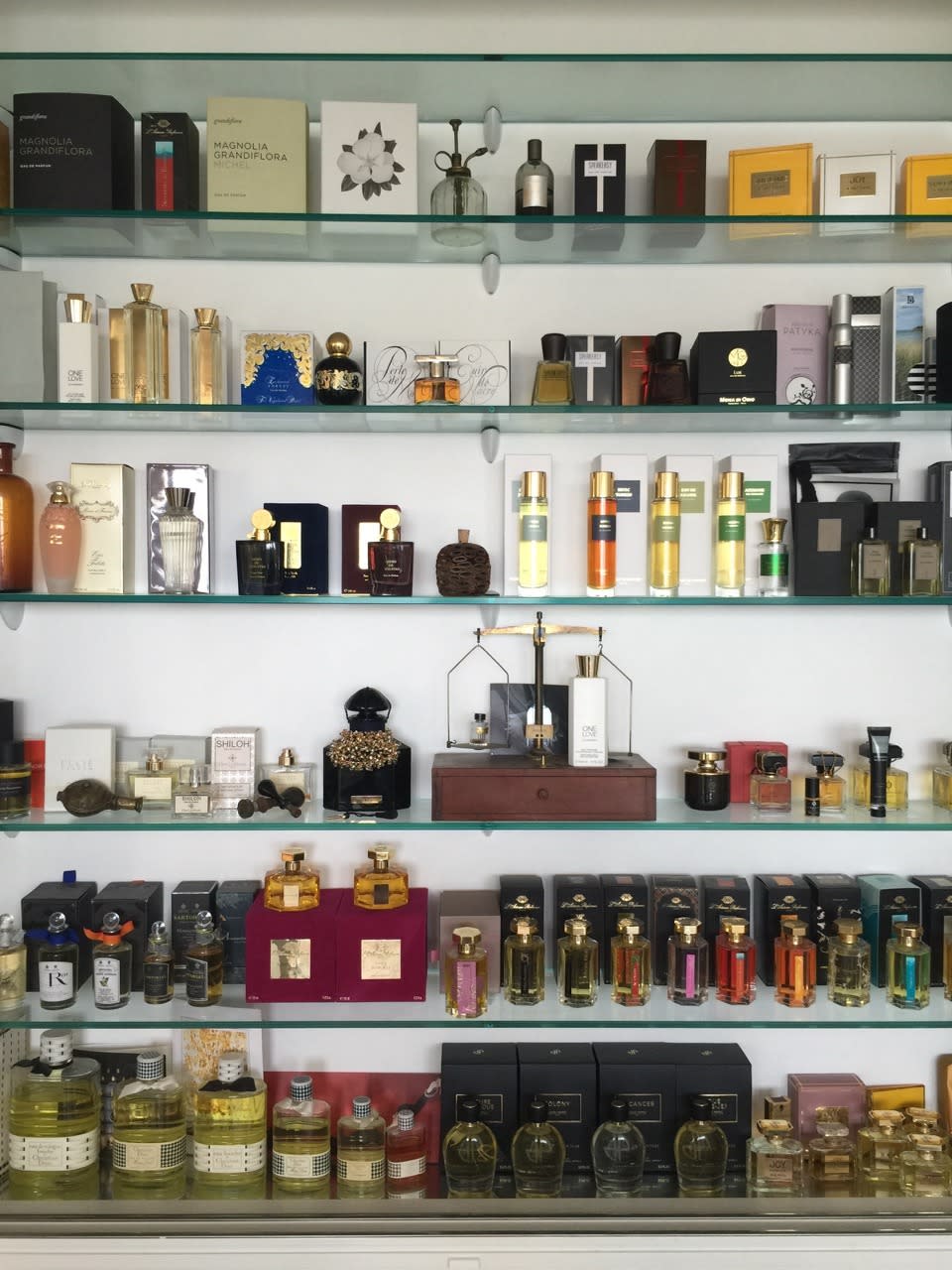
Inside French fragrance house L’Artisan Parfumeur. (Photo: L’Artisan Parfumeur)
Ever been curious about exactly what is in that eau de toilette bottle you’re spraying? Perfume is a blessing — it makes us smell great, feel great and can even boost our confidence. But as with many things, knowing the story behind how something is made gives us greater appreciation for it. A lot goes into your favorite sweet-smelling elixir, for the process behind fragrance creation is complex and incredibly detailed.
Fortunately, on a recent getaway in Southern France, I met Stéphanie Bakouche Kouidri, L’Artisan Parfumeur’s manager of fragrance development who created Rose Privée for the boutique French fragrance house. She’s someone who allegedly declared at five years old, “When I grow up I want to make perfume.” On a beautiful morning at the verdant Art et Parfum — a private botanic garden and lab founded in 1946 by legendary perfumer Edmond Roudnitska that produces fragrances for independent labels — outside France’s perfume mecca Grasse, she explained everything. And I mean everything.
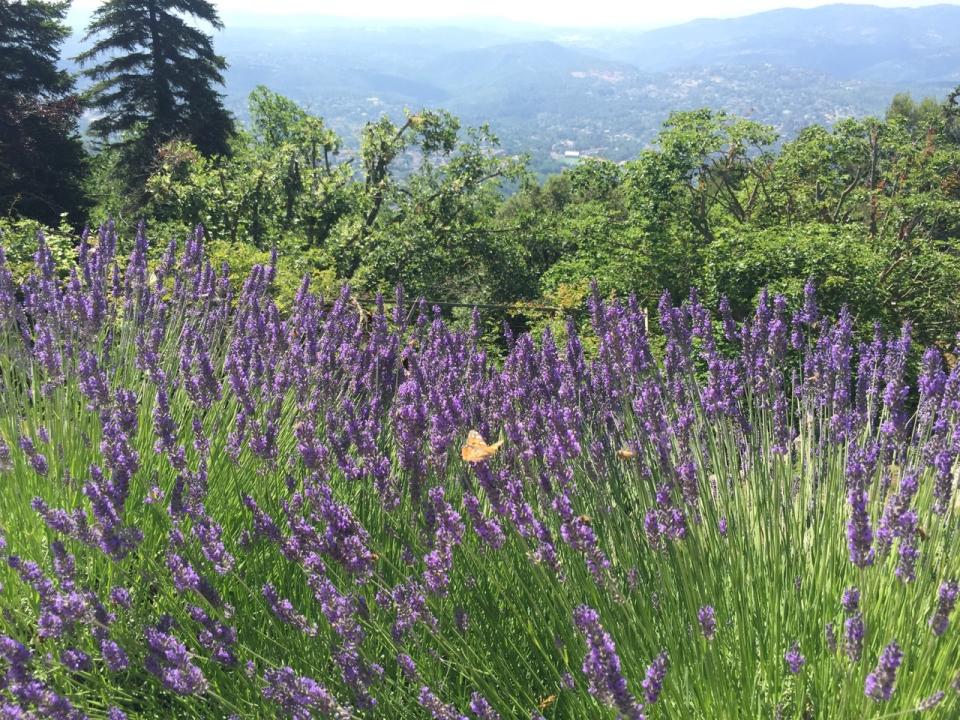
Grasse is the mecca of perfumery. (Photo: L’Artisan Parfumeur)
The process of creation in perfumery is very secret, very mysterious. We don’t talk about it. Everything you hear about it is always new and very interesting, because we never really reveal the details how perfumes are created. There are almost 4,000 raw materials for perfumery on the market, but [in this lab] 800 to 1,000 is a good quantity.
There have been a lot of rose [fragrances] this last year. It’s quite a coincidence because I was asked to create something [for L’Artisan]. I thought the range lacked a good, modern, very sophisticated rose, so I started working along the theme of the May rose. It has something very unique—it’s a soft floral, almost fruity, but it’s also very deep, like amber and spicy. It’s very complex, like a fragrance in itself. It only grows in Provence and Morocco [and blooms only in May], but there is something unique in the one from Grasse.
It usually takes between one to two years to create a fragrance—Rose Privée lasted like 14 months. The story of the ingredients in the fragrance is amazing. It feels like a walk along the Mediterranean sea. It opens on beautiful Sicilian citrus, very unusual ones like green mandarin and clementine orange, and then you have this hint of basil and black currant, and all the aromatic herbs. Then it’s the main May rose, and also lilac and carnation, and there’s quite a deep base where you can start smelling more woods and hay. It smells really like hay drying under the sun. The idea is to have something quite bright and really rich, but it’s an eau de parfum so it’s quite deep and strong too.
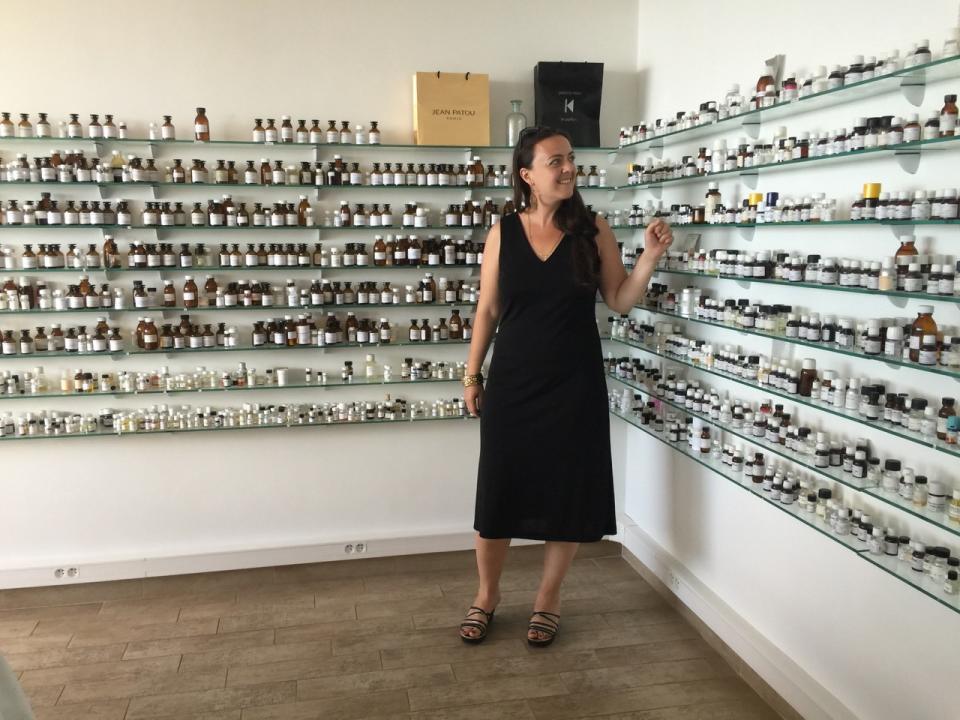
The many oils inside French fragrance house L’Artisan Parfumeur. (Photo: L’Artisan Parfumeur)
Perfume is very complex. More or less let’s say most perfumes on the market have between 30 and 60 ingredients. Even the most experienced perfumer cannot know what it’s going to smell like until it’s weighed, and then we can correct the formula accordingly. Sometimes we think of associations and we smell and it just doesn’t work, so we erase it and think of something else. With the knowledge we have of ingredients we start thinking of a list, then we work on the proportions. This is what lasts for several months or years, actually. For Rose Privée I think I wrote around 350 formulas. Some ingredients are in the fragrance at .01 percent and they still play a role, because ingredients are pure and extremely strong. We look for the perfect balance.
Also the perfect balance between natural extracts and molecules, most of which we have in the lab are nature-identical which means it’s one facet of the rose, for example, as opposed to the whole range of scents in the rose. Beautiful perfume is a combination of natural extracts and oils, and molecules so it has a trail behind you when you walk. It was important for me with Rose Privée that you smell different things throughout the day. I think it’s very interesting to be surprised by your fragrance at different moments.
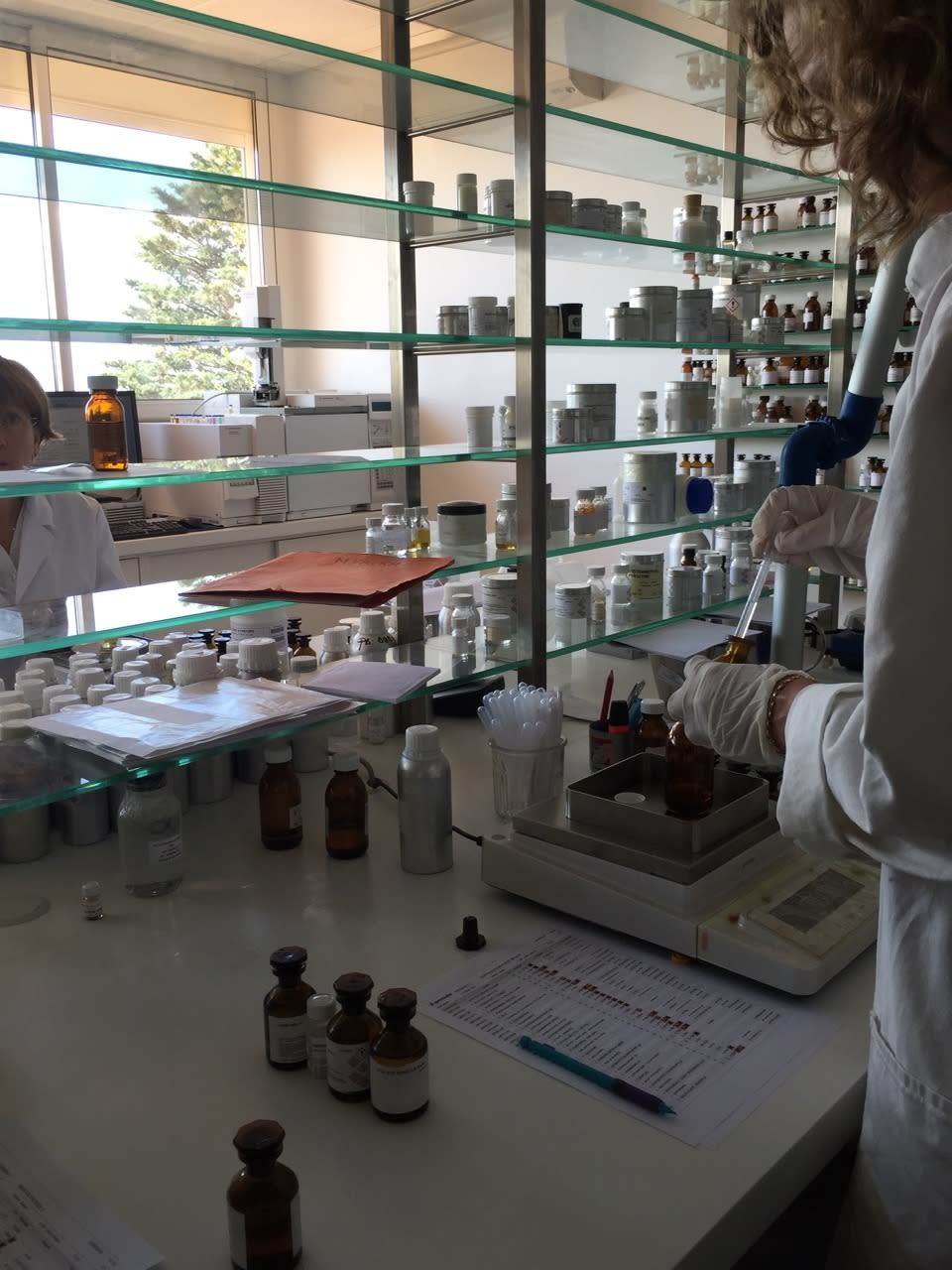
Note testing inside French fragrance house L’Artisan Parfumeur. (Photo: L’Artisan Parfumeur)
Even for the same ingredient you have different qualities: A lemon from Guinea will not smell the same as an Italian lemon. We have oranges from California and Florida, oranges from Israel and Italy, and they don’t smell the same. That’s why it’s a long apprenticeship, because we learn like 10 ingredients a week for years and it’s a training. We don’t have a gift with our nose, it’s really a training like the ear of the musician or the hand of the painter. We’re able to smell all day long and not get oversaturated because we train our noses like a muscle and little by little the memory works.
There are two main processes to transform the plant to essential oil or absolute: distillation and solvent extraction. With distillation you have big alambics, you create some steam and have all the petals above so when the steam goes through it has the property to carry with it the olfactory molecules in the petals. Then the tube is full of steam and olfactory molecules, and with a cold column it condenses and becomes liquid — the essential oil.
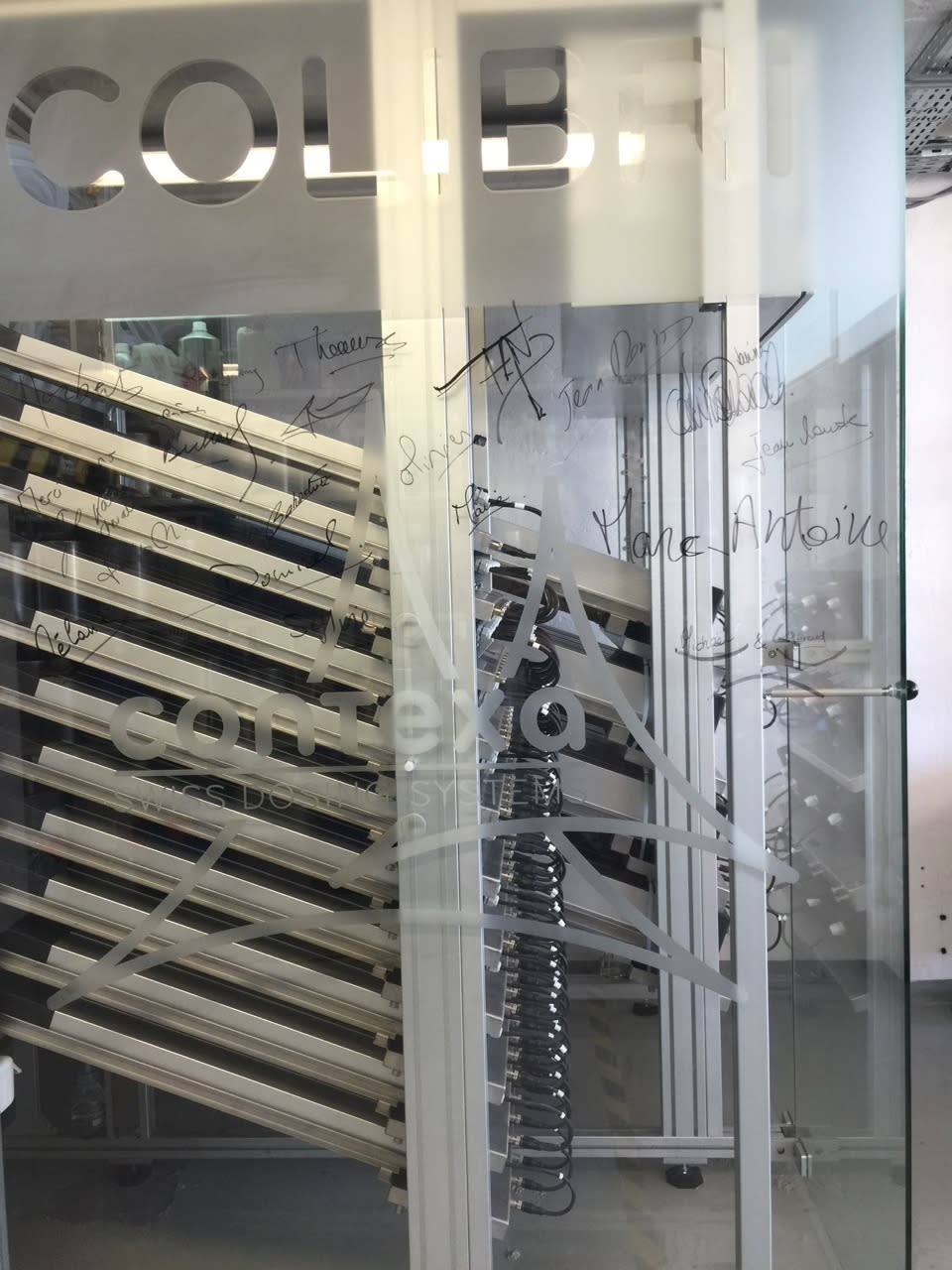
Inside French fragrance house L’Artisan Parfumeur. (Photo: L’Artisan Parfumeur)
The other technique is old — in big wood frames on a piece of glass they laid a thick layer of animal fat, and these ladies would put a petal of jasmine on one by one on top. It’s called en fleurage. We understood quite early that the fatty materials absorb the olfactory molecules and even in ancient Egypt we did this with olfactory creams. We replaced the animal fats with solvents that cause the petals to macerate and give away all their olfactory molecules. We heat it just a little bit to not damage the molecules and the solvent goes away, leaving a paste called the concrete. It’s mixed with alcohol, filtered and then we get the absolute. The May rose can only be extracted with solvents. You need minimum four tons of petals to make one kilo of absolute.
It’s a very hard job for the producers here. They don’t earn a lot of money because perfumers use these qualities less and less and replace them with cheaper qualities or molecules. We allow ourselves to use much more expensive oils and ingredients because we don’t do all this communication around it. Some of the big brands, most of the budget goes into the advertising; this is money they don’t put in the juice, as we say. That’s the difference with the niche brands—we put most of the budget in the juice itself.
We need to work close to a lab, because when I write a new formula very often I need to go and smell to remember exactly the different facets and differences. And then there’s a moment you need to know to stop. And I think this is true for every piece of art actually — painting or whatever. You can always add another final touch but there’s a moment when it’s important also to know when to stop. Even the master perfumers say they keep on learning every day because with every new formula they rediscover something. It’s really a passion job; it’s not an easy one either.
In the process of fabrication there are two phases: First they blend only the pure ingredients — the molecules, essential oils—for the execution of the formula. This needs to mature, usually for several weeks. Then the oil is put in alcohol. The concentration depends on what it is: extract, eau de parfum, eau de toilette — it goes between five and 20 percent alcohol. Then you blend it and let it mature for another month in a huge tank. When I used to work with Hermès it’s like towers of fabrication tanks, really impressive. Then you freeze everything to stop the maturation. You filter it one last time to obtain the final product, perfectly translucent, then you can fill the bottles. If you keep it away from light and heat it can last for years, but in the light it can deteriorate in months. When you have rich and true ingredients, maturation makes all the difference.
Related:
10 Misconceptions About Fragrance I Corrected in Perfumery Class

